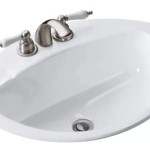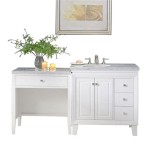Can I Put Vinyl Plank Flooring in My Bathroom?
Vinyl plank flooring has become increasingly popular in homes due to its durability, affordability, and stylish appearance. However, when it comes to bathrooms, many homeowners wonder if vinyl plank flooring is a suitable option. The answer is a resounding yes, but with some caveats. This article explores the reasons why vinyl plank flooring can be an excellent choice for bathrooms, the factors to consider when choosing vinyl plank flooring for this space, and the steps involved in installing it.
The Advantages of Vinyl Plank Flooring in Bathrooms
Vinyl plank flooring offers several advantages that make it a compelling choice for bathrooms:
Water Resistance: Unlike real wood flooring, which can warp and rot with prolonged exposure to moisture, vinyl plank flooring is designed to withstand water. The core of the planks is often made of a waterproof material, and the surface features a protective coating. This makes vinyl plank flooring ideal for bathrooms where spills and splashes are common.
Durability: Vinyl plank flooring is remarkably resilient. It can withstand heavy foot traffic, the weight of furniture, and the impact of dropped objects without showing significant wear and tear. This durability contributes to its longevity and makes it a practical choice for a high-traffic area like a bathroom.
Easy Maintenance: Vinyl plank flooring is very easy to clean. Spills and messes can be wiped up quickly, and regular sweeping or vacuuming is all that is needed to keep the floor looking its best. This low-maintenance nature is especially beneficial in a bathroom where hygiene is paramount.
Style and Variety: Vinyl plank flooring comes in an extensive range of styles, mimicking the look and feel of natural materials like wood, stone, and tile. This allows homeowners to achieve their desired aesthetic without the high cost and maintenance requirements of real wood or stone. The variety of colors, textures, and patterns available ensures a perfect match for any bathroom design.
Factors to Consider When Choosing Vinyl Plank Flooring for Bathrooms
While vinyl plank flooring offers significant advantages for bathrooms, certain factors should be considered before making a final decision:
Waterproofing: While vinyl plank flooring is inherently water-resistant, not all products are created equal. Choose flooring specifically designed for wet areas, often labeled as "waterproof" or "water-resistant." These models feature extra layers of protection to ensure that moisture cannot penetrate the core of the planks and cause damage.
Installation: The installation method is crucial for achieving a waterproof and durable floor. While some vinyl plank flooring can be glued down, a floating installation method is generally recommended for bathrooms. This method involves interlocking planks without any adhesive, allowing for some movement in case of moisture expansion. Ensure that the subfloor is properly prepared and leveled to avoid any potential problems.
Warranties: Always check the manufacturer's warranty before purchasing vinyl plank flooring. Look for a warranty that specifically covers water damage, especially if the flooring is intended for a bathroom. A comprehensive warranty provides peace of mind and ensures that the flooring is covered in case of any unforeseen issues.
Installing Vinyl Plank Flooring in a Bathroom
Installing vinyl plank flooring in a bathroom is a relatively straightforward process that can often be done by a homeowner with some DIY skills. However, it's essential to follow these steps carefully to ensure proper installation and achieve a durable, waterproof floor:
Preparation: Begin by removing any existing flooring and thoroughly cleaning the subfloor. Ensure that the subfloor is level and free of any debris or imperfections. If necessary, use a leveling compound to create a smooth, even surface.
Underlayment: Install a moisture-resistant underlayment on top of the subfloor. This underlayment provides an extra layer of protection against moisture and creates a more comfortable walking surface. Select an underlayment specifically designed for vinyl plank flooring and follow the manufacturer's instructions for installation.
Installation: Start laying the vinyl plank flooring from the furthest corner of the room, working your way towards the door. Follow the manufacturer's instructions for interlocking the planks. Use a utility knife to trim the planks to fit around any obstacles, such as pipes or fixtures. Leave an expansion gap around the perimeter of the room to allow for movement due to moisture or temperature changes.
Finishing Touches: Once the vinyl plank flooring is installed, use transition strips or moldings to create a smooth transition between the flooring and other surfaces, such as tile or carpet. Add any necessary trim or baseboards to complete the installation.

Vinyl Planks In Bathrooms Residential Inspiration Flooring

Dos And Don Ts For Installing Vinyl Plank Floors In The Bathroom Advice Homeowners

How To Install Vinyl Plank Flooring In A Bathroom Fixthisbuildthat

Can You Renovate Bathrooms With Vinyl Flooring Imagine Floors

Installing Vinyl Plank Flooring Lifeproof Waterproof Rigid Core Sustain My Craft Habit

Installing Vinyl Plank Flooring Lifeproof Waterproof Rigid Core Sustain My Craft Habit

How To Install Vinyl Plank Flooring In A Bathroom

Bathroom Flooring Pros And Cons

Luxury Vinyl Flooring Is A Great Choice For Chic Bathrooms

Can Vinyl Plank Flooring Go In A Bathroom Floorings







